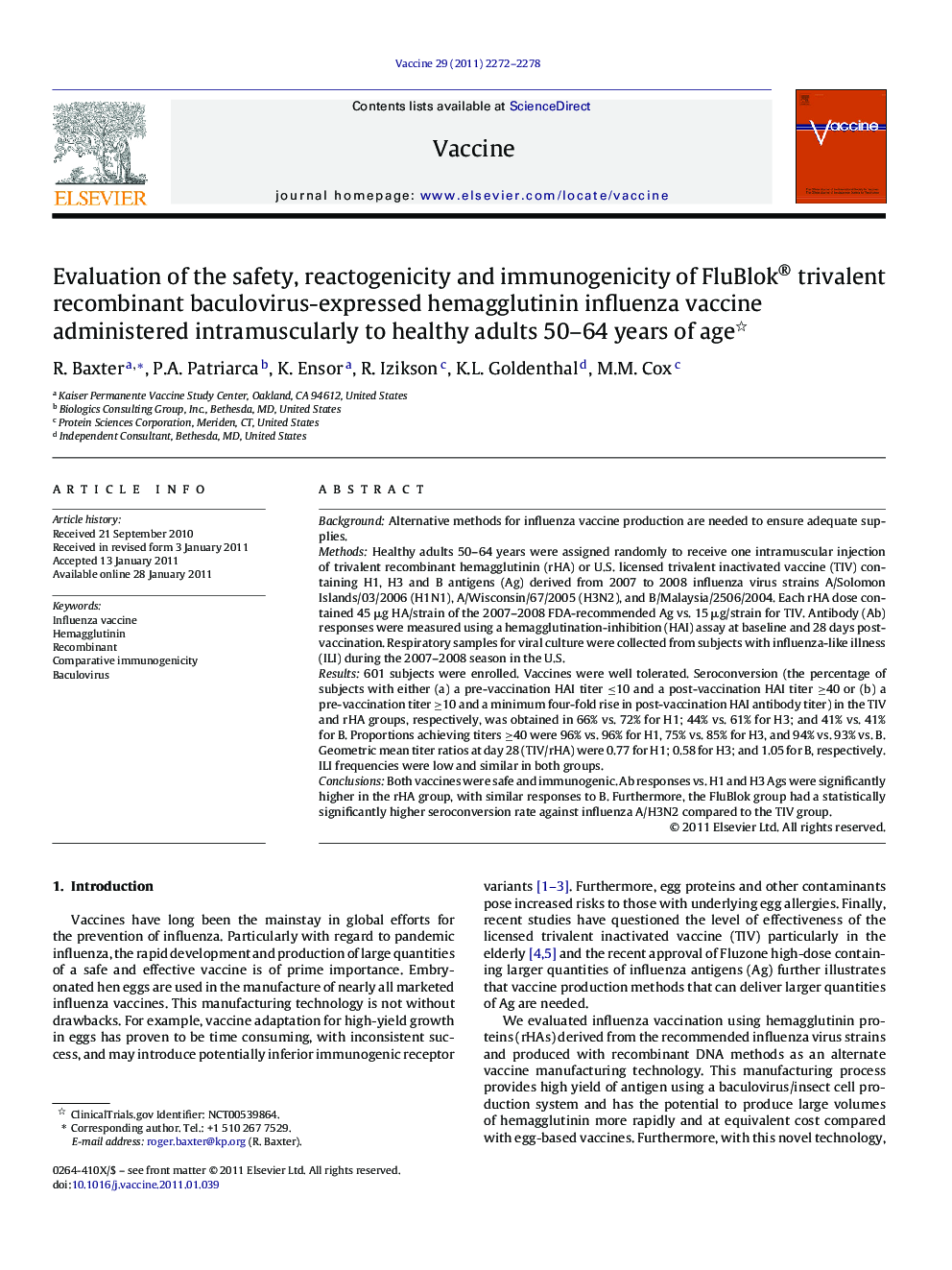| Article ID | Journal | Published Year | Pages | File Type |
|---|---|---|---|---|
| 2403459 | Vaccine | 2011 | 7 Pages |
BackgroundAlternative methods for influenza vaccine production are needed to ensure adequate supplies.MethodsHealthy adults 50–64 years were assigned randomly to receive one intramuscular injection of trivalent recombinant hemagglutinin (rHA) or U.S. licensed trivalent inactivated vaccine (TIV) containing H1, H3 and B antigens (Ag) derived from 2007 to 2008 influenza virus strains A/Solomon Islands/03/2006 (H1N1), A/Wisconsin/67/2005 (H3N2), and B/Malaysia/2506/2004. Each rHA dose contained 45 μg HA/strain of the 2007–2008 FDA-recommended Ag vs. 15 μg/strain for TIV. Antibody (Ab) responses were measured using a hemagglutination-inhibition (HAI) assay at baseline and 28 days post-vaccination. Respiratory samples for viral culture were collected from subjects with influenza-like illness (ILI) during the 2007–2008 season in the U.S.Results601 subjects were enrolled. Vaccines were well tolerated. Seroconversion (the percentage of subjects with either (a) a pre-vaccination HAI titer ≤10 and a post-vaccination HAI titer ≥40 or (b) a pre-vaccination titer ≥10 and a minimum four-fold rise in post-vaccination HAI antibody titer) in the TIV and rHA groups, respectively, was obtained in 66% vs. 72% for H1; 44% vs. 61% for H3; and 41% vs. 41% for B. Proportions achieving titers ≥40 were 96% vs. 96% for H1, 75% vs. 85% for H3, and 94% vs. 93% vs. B. Geometric mean titer ratios at day 28 (TIV/rHA) were 0.77 for H1; 0.58 for H3; and 1.05 for B, respectively. ILI frequencies were low and similar in both groups.ConclusionsBoth vaccines were safe and immunogenic. Ab responses vs. H1 and H3 Ags were significantly higher in the rHA group, with similar responses to B. Furthermore, the FluBlok group had a statistically significantly higher seroconversion rate against influenza A/H3N2 compared to the TIV group.
